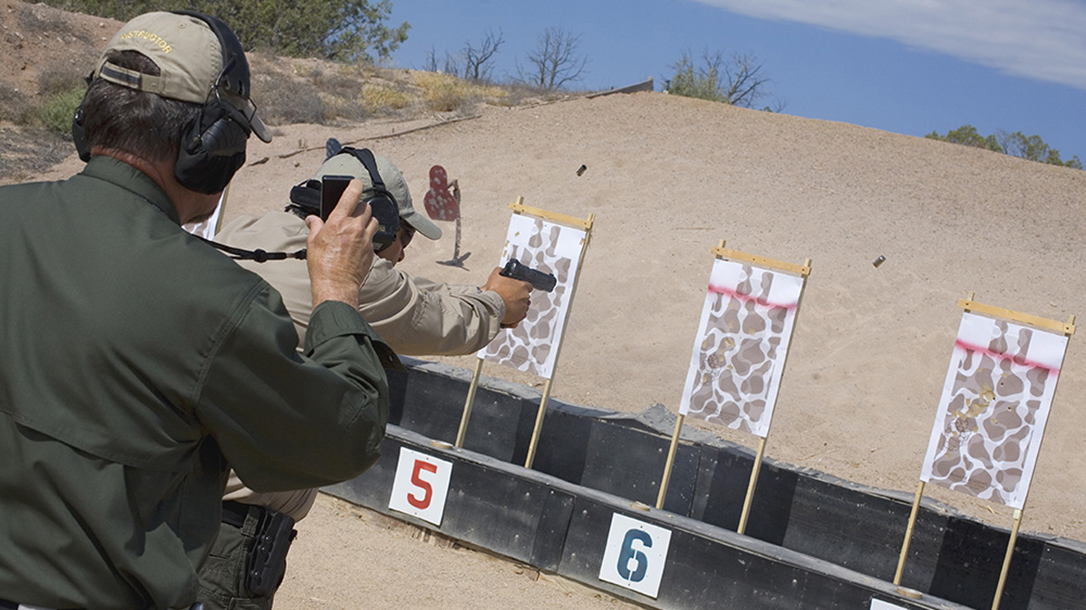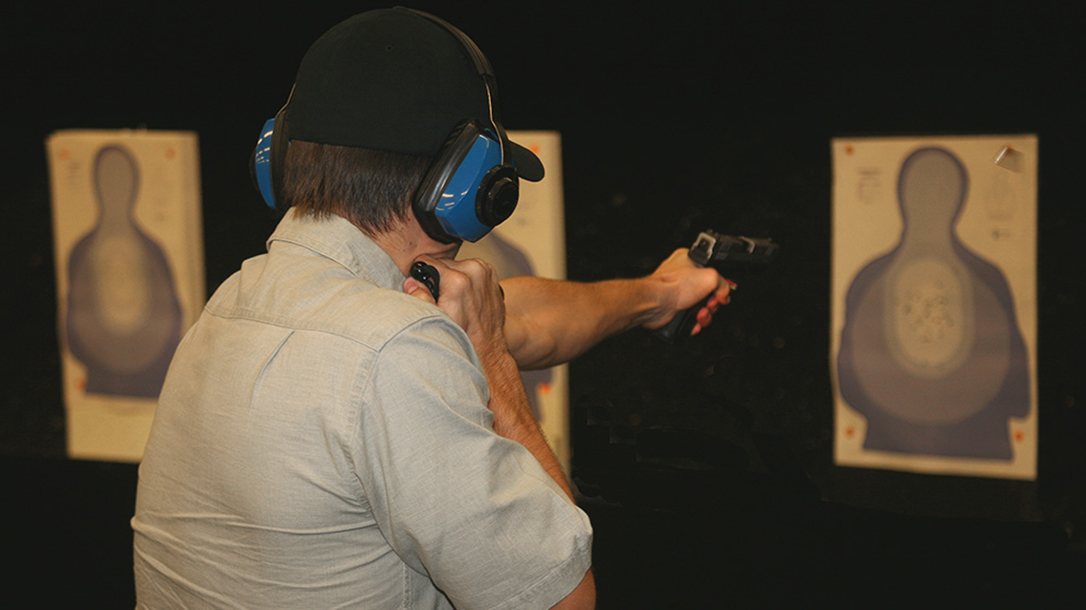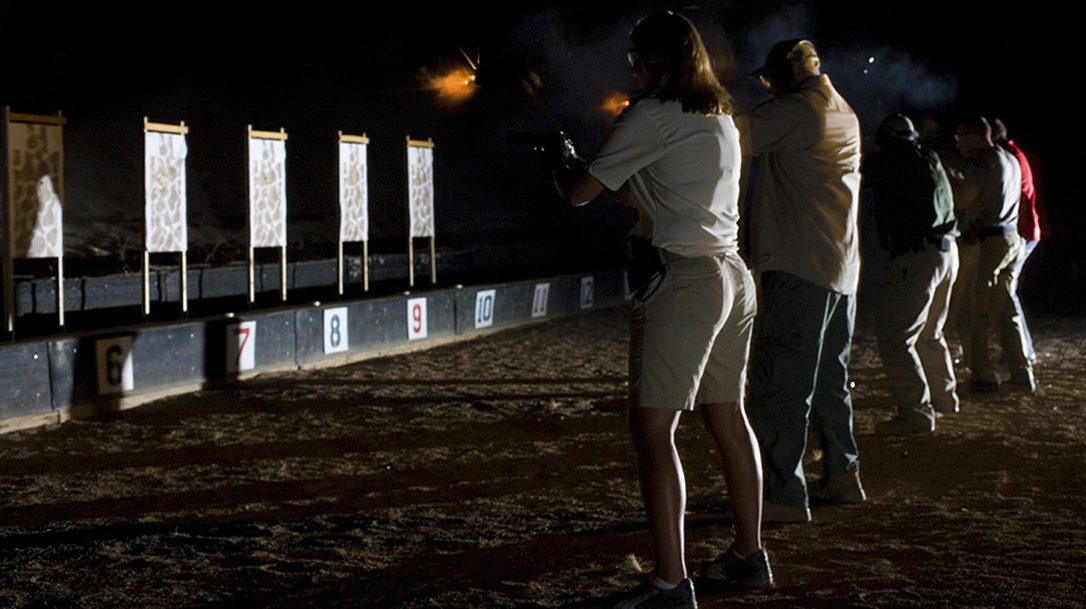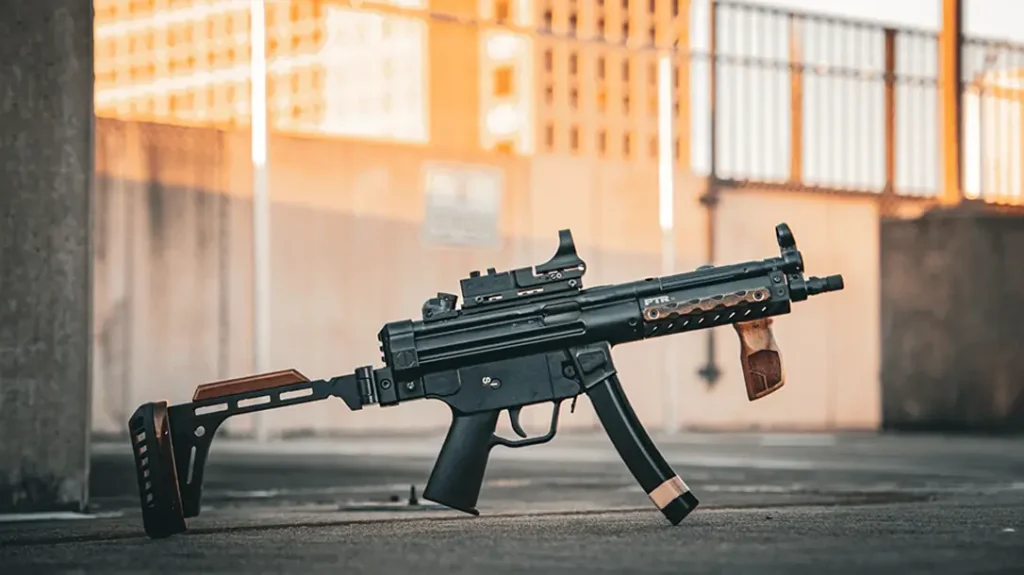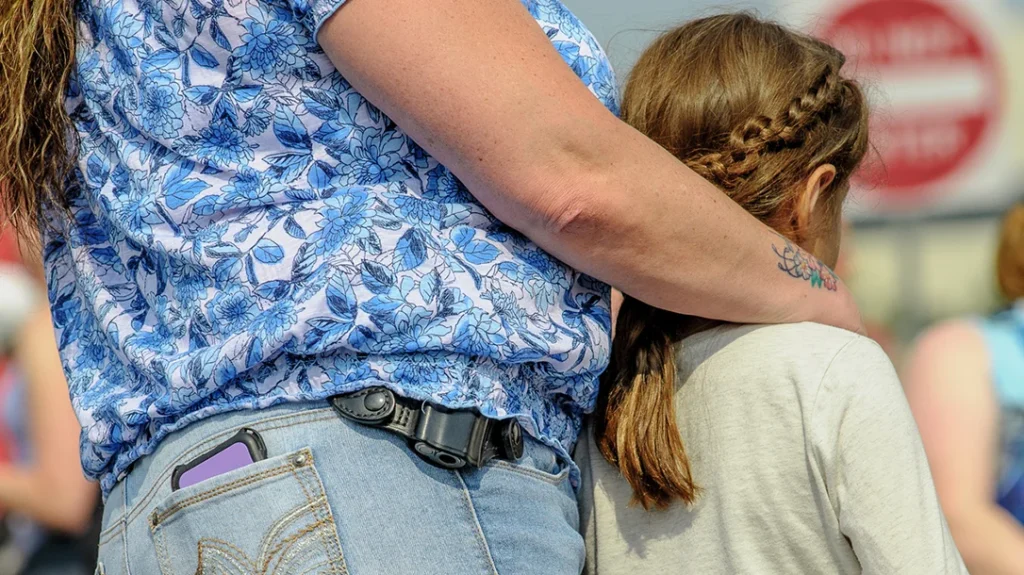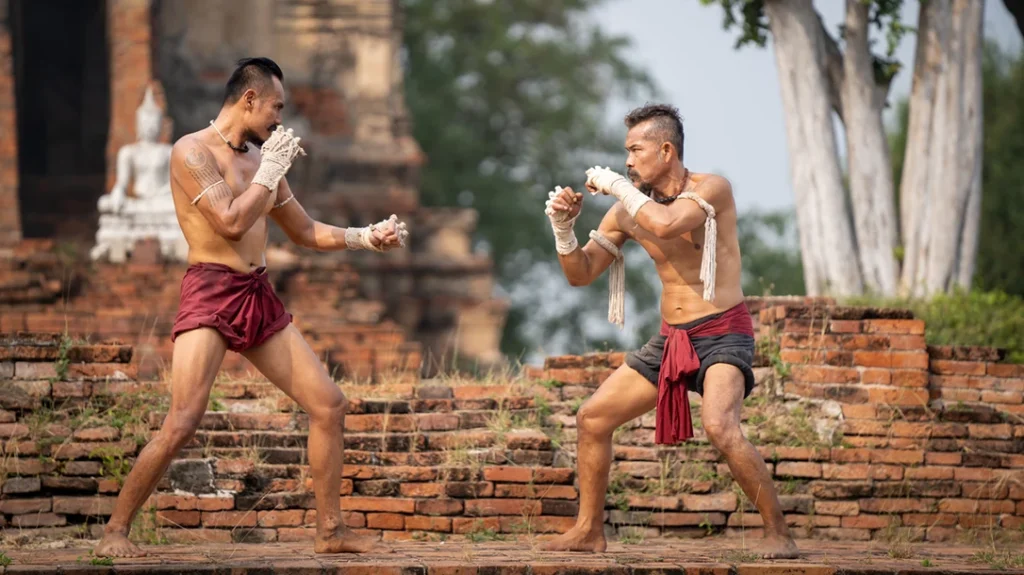Notre Dame’s legendary football coach Knute Rockne explained one of the keys to success is to, “Build up your weaknesses until they become your strong points.” He dispensed the advice nearly 100 years ago, but the wisdom rings true to this day, particularly for those who take self-defense seriously.
Avoidance: Planning to Fail
Everyone likes to practice what they’re good at, but it is much more important to practice what one isn’t good at when it comes to defensive skills. “…it’s the skill we’re not good at and may be essential to our survival we need to practice,” said Ed Head, chief rangemaster at Gunsite Academy and former Border Patrol officer.
Advertisement — Continue Reading Below
Gunsite COO Ken Campbell agrees and goes much further. He claims shooters must constantly learn and challenge themselves to become better overall.
“If you only do the easy tasks or what you like, you don’t grow,” Campbell said. “If you don’t grow you are training to fail.”
Like any activity or sport, shooters must work to get good. Also, shooters must constantly hone known skills and learn new gun handling skills to get better. Self defense is a lifetime journey of continuous learning.
Advertisement — Continue Reading Below
Hit the Wall
Not all the practice is fun, or even comfortable. In fact, the odds are you’re avoiding one of the simplest drills you can perform at home — and it’s not pure dry fire.
George Harris, president and CEO of International Firearms Consultants, claims the Wall Drill can identify and polish many weaknesses. With an unloaded — doubly checked — and holstered handgun, the shooter faces a white wall or board. There is no target. The shooter draws, presents the pistol and presses the trigger as if delivering an accurate shot. According to Harris, this drill shows shooters they might not be as good as they think.
“I usually let them see for themselves by running them through the Wall Drill, which validates all the fundamentals…necessary to be successful in precision marksmanship,” Harris said. “At the wall, the shooter sees and feels the flaws that need to be improved upon in basic trigger manipulation, grip, visual attention on the sights and follow through, which have to be consistent in execution and delivered on demand.”
Advertisement — Continue Reading Below
These sessions are far from exciting — ignored by many — but the repetition builds potentially lifesaving muscle memory.
Dressed for Gun Handling Skills Success?
For average person with a carry permit, presentation from their CCW rig in everyday clothes is another serious shortcoming. The wall drill can be done in street attire, and the practice is invaluable, but it should be turned up a notch according to Tommy Thacker, Ammo Inc. vice president of commercial sales and professional shooter.
“People just assume they can draw from their concealed carry holster tucked inside their waistband under their shirt just as fast as they can clear their Kydex range setup that sits out on their hip,” the trainer and former 3-Gun Nation Champion said. “They are two completely different animals and one must practice that draw over and over to feel completely comfortable. Dry fire draws help get you there, but a draw-and-fire practice is the only way you will know if you can do it. There is something to live-fire training from concealment and there are many out there that have never done it.”
Advertisement — Continue Reading Below
Harris agrees. “The Wall Drill is followed by the live-fire bullet hole drill, which validates the shooter’s ability to get the best performance out of their equipment in close proximity (about 10 feet) to the target,” he said. “In either of these drills the shooter will see and feel their deficiencies in delivering a precision shot and also learn what a good shot looks and feels like on a reoccurring basis.”
Stretching Before Training?
Some form of the wall drill is also good practice before training sessions begin, according to Thacker. “I like to see shooters work on the basic fundamentals in every practice session before ramping up,” he said. “Drawstroke, grip, stance, sight alignment, sight picture, trigger press and accuracy…. Sprinters don’t just walk out on the track and go full speed, they stretch and work up to full speed.”
Competitive shooters use this technique all the time. It allows them to visualize moves before each stage, but, just as importantly, limbers the muscles and tickles their memory before they race the clock.
Advertisement — Continue Reading Below
Rockne Disciples & Gun Handling Skills
“We all like to practice what we’re good at,” said Ed Head, longtime firearm instructor, chief rangemaster at Gunsite and former Border Patrol officer. “…but particularly with defensive skills, it’s the skill we’re not good at and may be essential to our survival we need to practice.”
Ken Campbell, who has been teaching at Gunsite Academy since 1992 and served as its COO there for the past 4 1/2 years, explains, “You must constantly be a student, constantly be learning, constantly be challenging yourself so you become stronger overall…If you only do the easy tasks or what you like, you don’t grow. If you don’t grow you are training to fail.”
“In shooting, an individual has to work to get good at anything,” explained Harris. “Stagnating on those skills that one is good at is an indication of laziness as opposed to continuing the lifetime journey of learning something new and becoming proficient at it.”
Advertisement — Continue Reading Below
Gun Handling Skills: Into the Subconscious
Regular practice, including plenty of those drills you’re bad at, is critical according to Head. “The reason training makes a difference is because of the need to practice until skills are reflexive,” he said, and “they can be performed on demand without conscious thought.”
Campbell adds simply learning the gun handling skills is not enough. According to him part of any self-defense enthusiast’s routine should include, “Practice…folks come take a class and then don’t practice regularly once they go home. These are perishable skills. When something bad happens to you, you need to respond immediately. There is not time to reach back in your memories as to how to respond. So, keep practicing once you go home.”
Benefit to the Pain?
“In a high-stress situation a person usually rises to their lowest level of proficiency,” Harris emphasized. Campbell agrees. “…[A]uthor and Gunsite graduate Barrett Tillman said that ‘You do not rise to the occasion, you default to your level of training,’” he explained. “You can’t know what skill you will need as you can’t predict what is going to happen to you. So, will it be up close and dirty, a long shot, a hostage shot? You must have a strong overall skillset to respond. Don’t be faced with the thought that: ‘I wish I would have practiced my head shots more’ as you face that challenge on the street”
Advertisement — Continue Reading Below
“You get a second chance in practice and the timer can always be reset, but when you are faced with a self-defense situation there are no do-overs,” Thacker summarized. “You have to know without hesitation what you can and can’t do and how long it will really take for you to get it done.”
For more information on training, visit gunsite.com.
